The Hindu Newspaper Analysis for UPSC
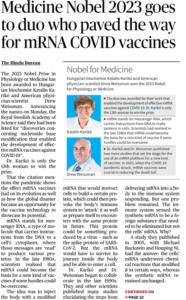
The Hindu Newspaper Analysis 30 September 2023
- The 2023 Nobel Prize in Physiology or Medicine has been awarded to Hungarian biochemist Katalin Karikó and American physician-scientist Drew Weissman. Announcing the names on Monday, the Royal Swedish Academy of Science said they had been feted for “discoveries concerning nucleoside base modification that enabled the development of effective mRNA vaccines against COVID-19”.
- Karikó is only the 13th woman to win the prize.
- mRNA stands for messenger RNA, a type of molecule that carries instructions from the DNA to a cell’s cytoplasm, where those messages are ‘read’ to produce various proteins. In the late 1980s, scientists realised that mRNA could become the basis for a new kind of vaccines if some hurdles could be overcome.
- The idea was to inject the body with a modified mRNA that would instruct cells to build a certain protein, which could then provoke the body’s immune system to ‘attack’ it as well as prepare itself to encounters with the same protein in future. This protein could be something produced by a virus — such as the spike protein of SARS-CoV-2. But the mRNA would have to survive its journey inside the body and be able to enter a cell.
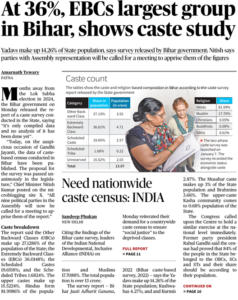
- The report said the Other Backward Classes (OBCs) make up 27.1286% of the population of the State; the Extremely Backward Classes (EBCs) 36.0148%; the Scheduled Castes 19.6518%; and the Scheduled Tribes 1.6824%. The upper castes make up 15.5224%. Hindus form 81.9986% of the population and Muslims 17.7088%. The total population is over 13 crore.
- The survey report — Bihar Jaati Adharit Ganana, 2022 (Bihar caste-based survey, 2022) — says the Yadavs make up 14.26% of the State population; Kushwahas 4.27%; and and Kurmis 2.87%. The Musahar caste makes up 3% of the State population and Brahmins 3.66%. The upper-caste Kasha community comes to 0.68% population of the State.
- First Caste Census as SECC (Socio-Economic and Caste Census):
- SECC was conducted for the first time in 1931.
- SECC is meant to canvass every Indian family, both in rural and urban India, and ask about their:
- Economic status, so as to allow Central and State authorities to come up with a range of indicators of deprivation, permutations, and combinations of which could be used by each authority to define a poor or deprived person.
- It is also meant to ask every person their specific caste name to allow the government to re-evaluate which caste groups were economically worst off and which were better off.
- SECC has the potential to allow for a mapping of inequalities at a broader level.
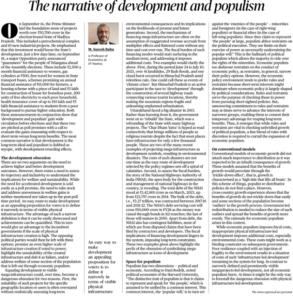
- Equating development to visible mega-infrastructure could, over time, become a dangerous obsession.
- Conventional models of economic growth did not attach much importance to distribution as it was expected to be an inbuilt consequence of growth. These models assumed that the benefits of growth would percolate through the ‘trickle-down effect’, that is, growth is characterised as a ‘high tide that lifts all boats’.
- While economic populism imposes fiscal costs, inappropriate physical infrastructure-led development imposes additional costs, especially environmental costs. These costs might work as a binding constraint on subsequent governments.

- For the first time since 2018, India has reported a deficit monsoon.
- About 9% of the country received ‘excess’ rainfall with 18% getting ‘deficient’ and the rest of the country, ‘normal’ rainfall.
- The spatial and temporal variance of the monsoon reiterates the need to invest in more resilient infrastructure that can be an all-weather insurance against the increasingly unpredictable vagaries of the global climate.
- The pattern in recent years is to improve forecast models that are better able to warn of significant changes in weather a week or two ahead than having approaches that fail to capture the dynamics of the Indian monsoon. More money and expertise should be directed towards this.
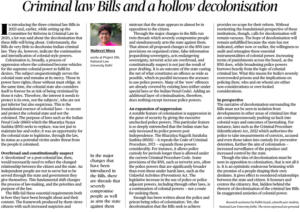
- Colonisation is, broadly, a process of oppression where the colonised become vehicles for the supreme colonial power to fulfil its desires. The subject unquestioningly serves the colonial state and remains at its mercy.
- Those in power have rights; those without must oblige.
- A ‘decolonised’ or a post-colonial law, then, would necessarily need to reflect the changed relationship between the citizen and the state.
- Many of the ‘new’ offences are already covered by existing laws (either under special laws or the Indian Penal Code). Adding an additional layer of criminalisation, therefore, does nothing except increase police powers.
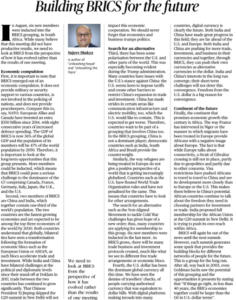
- The GDP of BRICS is now 36% of the global GDP and the population of its members will be 47% of the world population by 2050. Therefore, it is important to look at the long-term opportunities that this group presents. More members could be inducted, which means that BRICS could pose a serious challenge to the dominance of the G7 comprising Canada, France, Germany, Italy, Japan, the U.K., and the U.S.
- two members of BRICS are China and India, which together contain one-third of the world’s population.
- Search for an alternative
- Both India and China are pushing for more trade, investment, and business in their currencies and together, through BRICS, they can push their own currencies as alternative currencies to the dollar.
- the continent that promises economic growth this century is Africa.
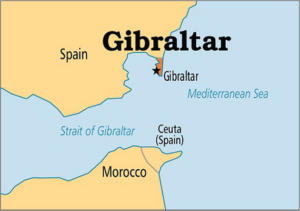
- BRICS marked its 15th summit by expanding its membership from five to eleven countries, reflecting a concerted effort to enhance its global standing.
- Egypt, Iran, Saudi Arabia, UAE, Ethiopia, and Argentina joined the BRICS fold, amplifying the group’s representation across the Middle East, Africa, and South America.
- Full membership will take effect on January 1, 2024.
- BRICS is an acronym for the grouping of the world’s leading emerging economies, namely Brazil, Russia, India, China, and South Africa.
- In 2001, the British Economist Jim O’Neill coined the term BRIC to describe the four emerging economies of Brazil, Russia, India, and China.
- The grouping was formalized during the first meeting of BRIC Foreign Ministers in 2006.
- South Africa was invited to join BRIC in December 2010, after which the group adopted the acronym BRICS.
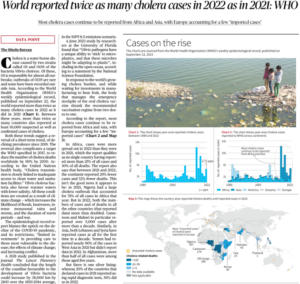
- Cholera is a water-borne disease caused by two strains called O1 and O139 of the bacteria Vibrio cholerae. Of these, O1 is responsible for almost all outbreaks; outbreaks of O139 are rare and none have been recorded outside Asia.
- According to the World Health Organization (WHO)’s weekly epidemiological record, published on September 22, the world reported more than twice as many cholera cases in 2022 as it did in 2021
- Both these trends suggest a reversal of a short-term trend, of declining prevalence since 2019. The reversal also complicates a target the WHO specified in 2017, to reduce the number of cholera deaths worldwide by 90% by 2030.
- According to the United Nations health body, “Cholera transmission is closely linked to inadequate access to clean water and sanitation facilities.”
- About Cholera disease:
- It is a life-threatening infectious disease and a public health hazard.
- It is an acute, diarrheal illness caused by infection of the intestine with the bacterium Vibrio cholera.
- Symptoms: Profuse watery diarrhoea, Vomiting, Leg cramps etc
- It is transmitted to humans through water or food which is contaminated with the cholera bacterium.
- The disease can spread rapidly in areas with inadequate treatment of sewage and drinking water.
- Currently, there are three WHO pre-qualified oral cholera vaccines (OCV), Dukoral, Shanchol, and Euvichol-Plus. All three vaccines require two doses for full protection.

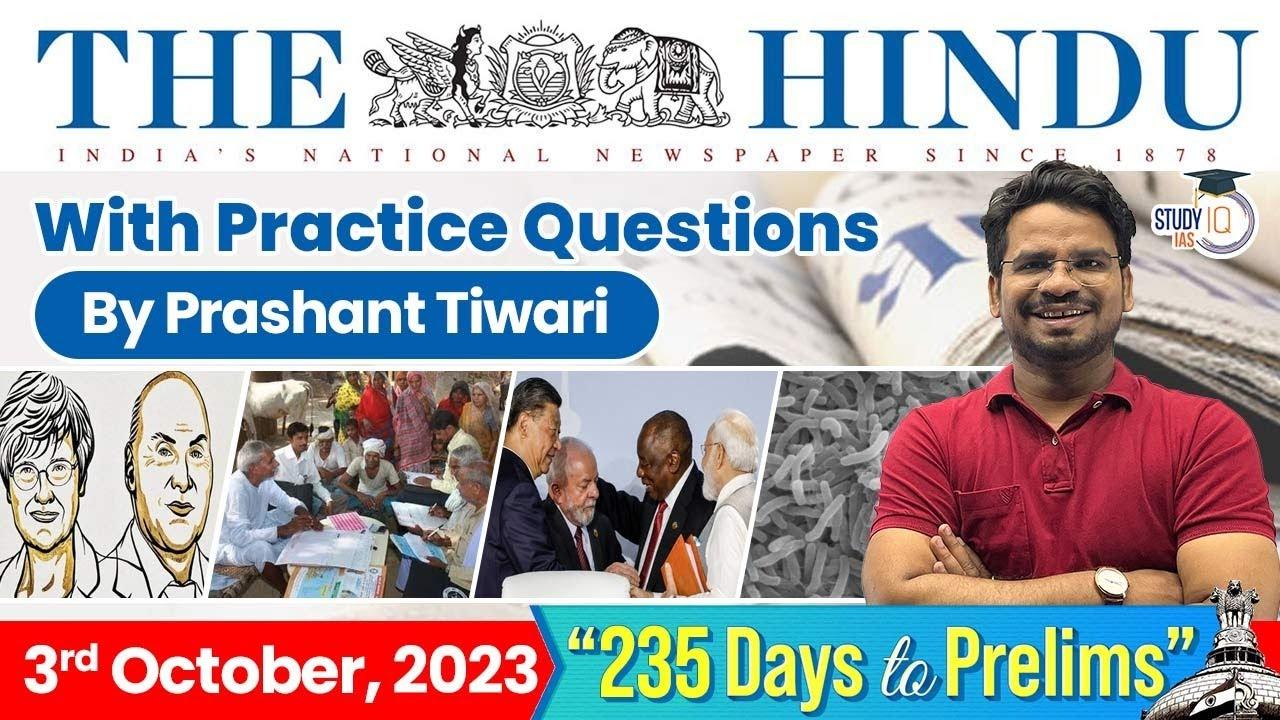
 The Hindu Newspaper Analysis 6 October 2...
The Hindu Newspaper Analysis 6 October 2...
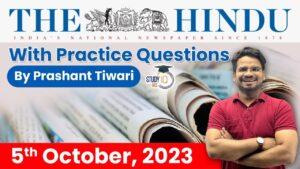 The Hindu Newspaper Analysis 5 October 2...
The Hindu Newspaper Analysis 5 October 2...
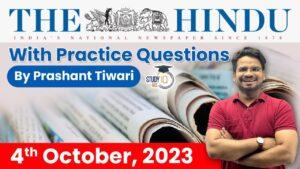 The Hindu Newspaper Analysis 4 October 2...
The Hindu Newspaper Analysis 4 October 2...

















